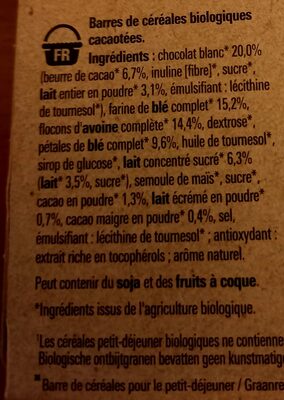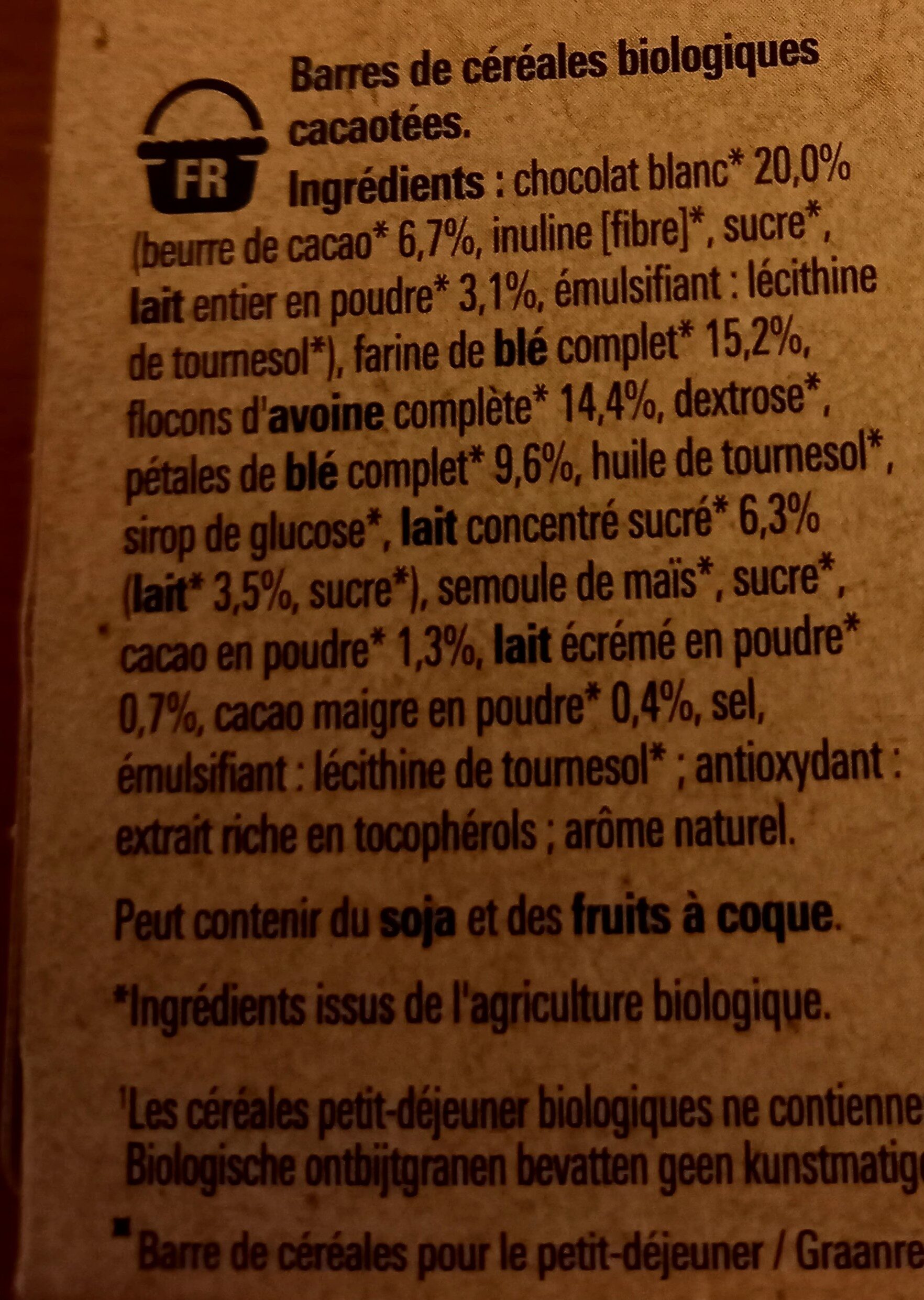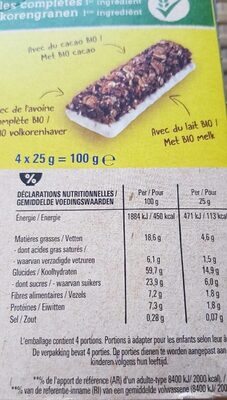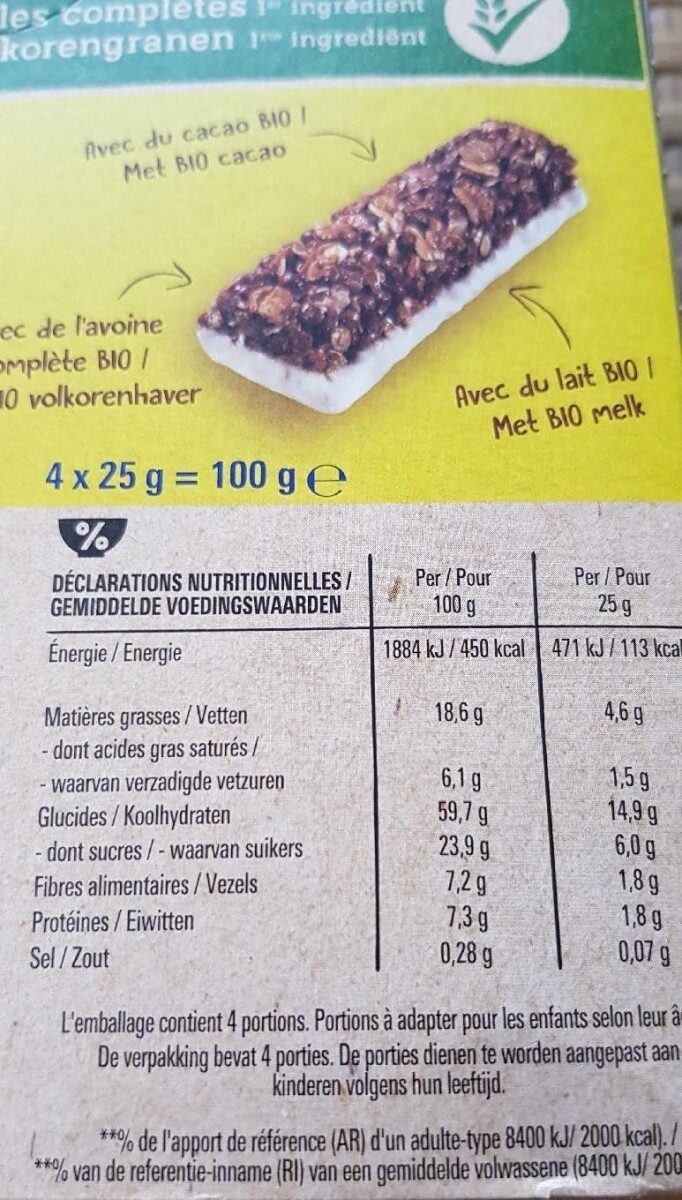NESTLE NESQUIK Bio Barres de céréales 4X25g - NestléNesquik bio - 100 g
This product page is not complete. You can help to complete it by editing it and adding more data from the photos we have, or by taking more photos using the app for Android or iPhone/iPad. Thank you!
×
Some of the data for this product has been provided directly by the manufacturer NESTLE FRANCE. - Customer service: Contact form 0 809 400 412 (service gratuit + prix de l'appel)
Barcode: 5900020036209 (EAN / EAN-13)
Common name: Barres de céréales biologiques cacaotées
Quantity: 100 g
Packaging: Box
Brands: NestléNesquik bio, Nesquik
Categories: Snacks, Sweet snacks, Bars, Cereal bars
Labels, certifications, awards:
Organic, EU Organic, AT-BIO-301, Green Dot, Nutriscore, Nutriscore Grade C, AB Agriculture Biologique, Agriculture UE, Agriculture UE/Non UE, Agriculture non UE, Bio, Bio européen, Point Vert, Sans arômes artificiels, Sans colorants


Origin of ingredients: France
Manufacturing or processing places: France
Stores: Carrefour, Carrefour Market, E.leclerc, carrefour.fr
Countries where sold: France
Matching with your preferences
Environment
Packaging
Transportation
Labels
Other information
Preparation: Se référer aux instructions indiquées sur l'emballage
Conservation conditions: A conserver dans un endroit frais et sec.
Customer service: Cereal Partners France, 34-40 rue Guynemer 92130 Issy-les-Moulineaux
Report a problem
Data sources
The manufacturer NESTLE FRANCE uses Equadis to automatically transmit data and photos for its products.
Product added on by kiliweb
Last edit of product page on by org-nestle-france.
Product page also edited by additives-app-chakib, dorado-jerome, driveoff, ecoscore-impact-estimator, moon-rabbit, naruyoko, openfoodfacts-contributors, packbot, spotter, teolemon, yuka.B58cMICgHtJ7Mcb276Mu2R-YKfzFGvVHFEAOog, yuka.sY2b0xO6T85zoF3NwEKvlkVBeOvehwD5MgP4gH2p_tWfKYXoRe17_YvHY6o, yuka.sY2b0xO6T85zoF3NwEKvlkZIC-OCkxjdBjPtlBeCn-6hFYLUU-5WzbfxNqg, yuka.sY2b0xO6T85zoF3NwEKvllNJVeDgnyvtHRr5hHWSn_GgNrfWPIAuvrLGGKs.













